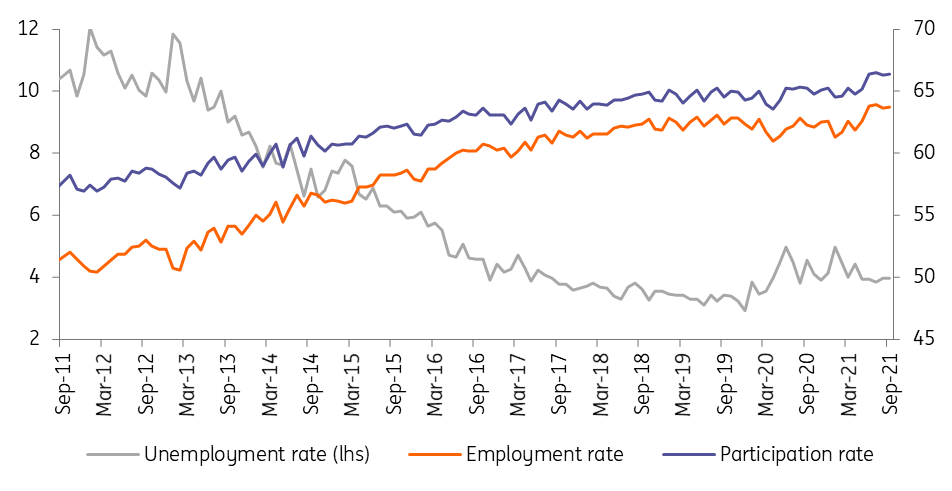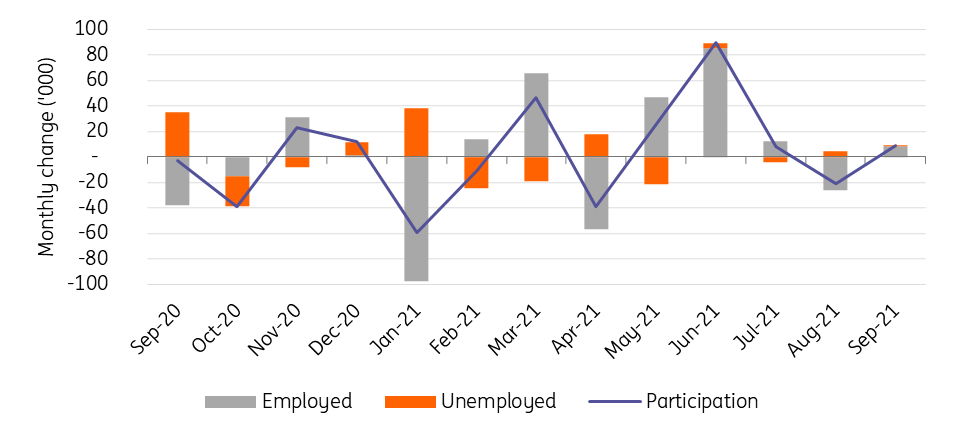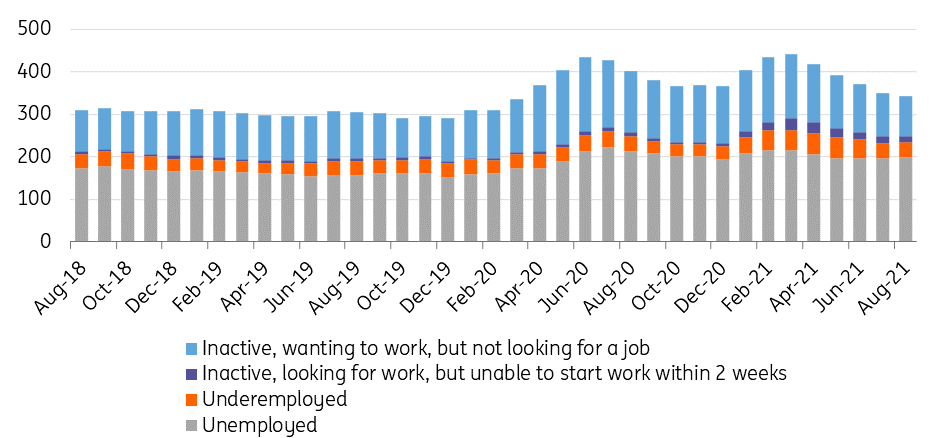Hungarian labour market participation improves
With improving participation, employment is also increasing, but frictions remain, keeping unemployment unchanged
The Hungarian Central Statistical Office (HCSO) released the latest labour market statistics, which suggest stability. The unemployment rate remained at 4% in September, a level it has been fluctuating around for five months. The number of unemployed people has also been rigid, hovering around 195,000.
Labour market trends (%)

At first glance, this unchanged environment doesn't tell us anything new. However, the details offer some interesting insights. The number of labour market participants increased by almost 8,600 in September and 8,100 of them immediately found themselves in a job, increasing the number of employed. This is a very strong indication of the significant absorption power of the Hungarian labour market. There is a labour shortage in more and more sectors, while labour supply remains limited. With that, new entrants or returnees to the labour market can find a job almost immediately.
Decomposition of the change in participation

It is also worth noting though that the stagnation in the number of unemployed people indicates the presence, or even the strengthening of labour market frictions. The strong demand for labour is still not enough to reduce long-term unemployment. This suggests localisation and skill-related frictions between demand and supply.
Without having actual monthly data about the potential labour reserves, it is hard to see the most important changes in the Hungarian labour market. Since a methodological change in July, the HCSO doesn’t publish this data. What we have is the three-month moving average of the potential labour force with a one month delay. According to this, the labour reserve is now below 350,000 and while the number of unemployed has been practically unchanged lately, the number of inactives who are not looking for a job, or unable to start in two weeks, is decreasing.
The potential labour reserve ('000)

The above mentioned trend suggests that unemployed people are having a hard time finding their way back to work, losing skills and also hope. With a constantly depleting potential labour reserve, the only way to reduce the supply-demand frictions and the labour shortage is to deploy active labour market policies. As we haven’t seen such a change in economy policy yet, we expect only a very slow improvement in the labour market situation. By the end of the year, the unemployment rate could move close to 3.8%, but we don’t rule out stagnation here. What could change this next year is the rise in wages (the minimum wage is to be increased by 20-20% both for skilled and unskilled labour), as this could further increase the number of labour market participants. However, this in itself won’t solve the issue of long-term unemployment.
This publication has been prepared by ING solely for information purposes irrespective of a particular user's means, financial situation or investment objectives. The information does not constitute investment recommendation, and nor is it investment, legal or tax advice or an offer or solicitation to purchase or sell any financial instrument. Read more
Download
Download snap